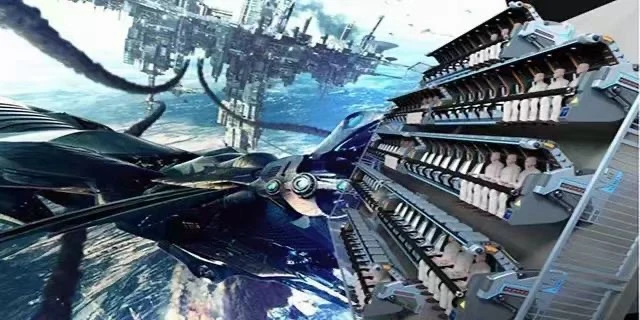- Albanian
- Arabic
- Belarusian
- Bengali
- Czech
- English
- French
- German
- Hebrew
- Hungarian
- Indonesian
- irish
- Italian
- Japanese
- kazakh
- Persian
- Russian
- Thai
- Uzbek
- Vietnamese
A Colorful Adventure on the Carnival Ferris Wheel Experience
The Enchantment of Carnival Ferris Wheels
When one thinks of a carnival, vivid images of swirling colors, bustling crowds, and infectious laughter spring to mind. At the heart of these whimsical gatherings, a centerpiece often stands tall and proud the Ferris wheel. This towering structure, gracefully spinning against the backdrop of a starry sky, has captivated the hearts of millions around the globe. Herein lies an exploration of the cultural significance, engineering marvel, and nostalgic allure of the carnival Ferris wheel.
A Timeless Icon
The Ferris wheel, a quintessential symbol of amusement parks and fairs, dates back to the late 19th century. The original Ferris wheel was constructed in 1893 for the World’s Columbian Exposition in Chicago, designed by George Washington Gale Ferris Jr. Its grand unveiling amazed onlookers, providing an exhilarating experience as riders ascended to breathtaking heights, offering splendid views of the fair and the city beyond.
Over the decades, the Ferris wheel has transformed into an enduring icon of joy and celebration. It represents a space where memories are forged—first dates, family outings, and friendly reunions—all intertwined in the shared experience of reaching the apex of the ride. With each gentle revolution, it evokes feelings of nostalgia, allowing riders to escape temporarily from the trials of everyday life and embrace the sheer joy that a carnival brings.
Engineering Marvels
The engineering behind the Ferris wheel is nothing short of majestic. While it may appear to consist of simple components, the intricacies involved in its design and construction are profound. Modern Ferris wheels can reach impressive heights, some soaring over 200 feet, providing panoramic views of the surrounding landscapes. They combine robustness with aesthetics, incorporating advanced materials and technology to ensure safety and stability.
carnival ferris wheel

The mechanics of the Ferris wheel rely on a well-calibrated balance of weight distribution and rotation. The cars, often vibrantly adorned, are suspended and designed to provide comfort and safety as they ascend and descend. In contemporary variations, the addition of enclosed cabins with transparent walls enhances the experience, allowing riders to marvel at the breathtaking vistas while feeling the rush of the wind.
The Carnival Experience
Part of what makes the Ferris wheel so enchanting is its location within the carnival. As a focal point, it often serves as a landmark, drawing visitors in from all directions. The atmosphere is electric, with the sound of laughter, the aroma of cotton candy, and the chorus of carnival games enveloping the air. The Ferris wheel encapsulates the essence of the carnival experience—a blend of excitement, camaraderie, and a splash of magic.
Riding the Ferris wheel, one is often transported to a state of childlike wonder. As the wheel ascends, the hustle and bustle of the carnival fades away, replaced by a serene view that stretches as far as the eye can see. It’s a moment of reflection amid the chaos, an opportunity to connect with friends and family as voices are carried away by the wind, leaving only glimpses of heartfelt conversations and shared dreams.
A Celebration of Life
In many cultures, the Ferris wheel symbolizes the cycles of life—our steady rise and inevitable falls, much like the ride itself. Each spin represents moments of joy, thrill, anticipation, and sometimes apprehension. Yet, it is these very experiences that weave the rich tapestry of human existence. The carnival Ferris wheel, in its pristine beauty and robust design, embodies our desire for adventure, connection, and unabashed happiness.
As the lights twinkle and the carnival music plays, the Ferris wheel continues to be a beacon of joy. It reminds us to cherish moments of delight, celebrate our journeys, and gather with our loved ones amidst the whirl of life. So the next time you find yourself at a carnival, don’t miss the chance to board the Ferris wheel—it promises an unforgettable ride full of laughter, wonder, and the sweet embrace of nostalgia.
-
Flume Ride-Hebei Zhipao Amusement Equipment Manufacturing Co., Ltd.|Thrilling Water Attraction&Customizable DesignJul.30,2025
-
Flume Ride - Hebei Zhipao Amusement Equipment | Water Coaster, Thrilling DescentJul.30,2025
-
Flume Ride - Hebei Zhipao | Thrilling Water AttractionJul.30,2025
-
Flume Ride: Thrilling Water Attraction by Hebei Zhipao|Log Flume Manufacturers&Flume Ride DesignJul.30,2025
-
Flume Ride-Hebei Zhipao Amusement Equipment Manufacturing Co., Ltd.|Thrilling Water Coaster, Safe DesignJul.30,2025
-
Flume Ride-Hebei Zhipao Amusement Equipment Manufacturing Co., Ltd.|Thrilling Water Attraction, Safe DesignJul.30,2025
